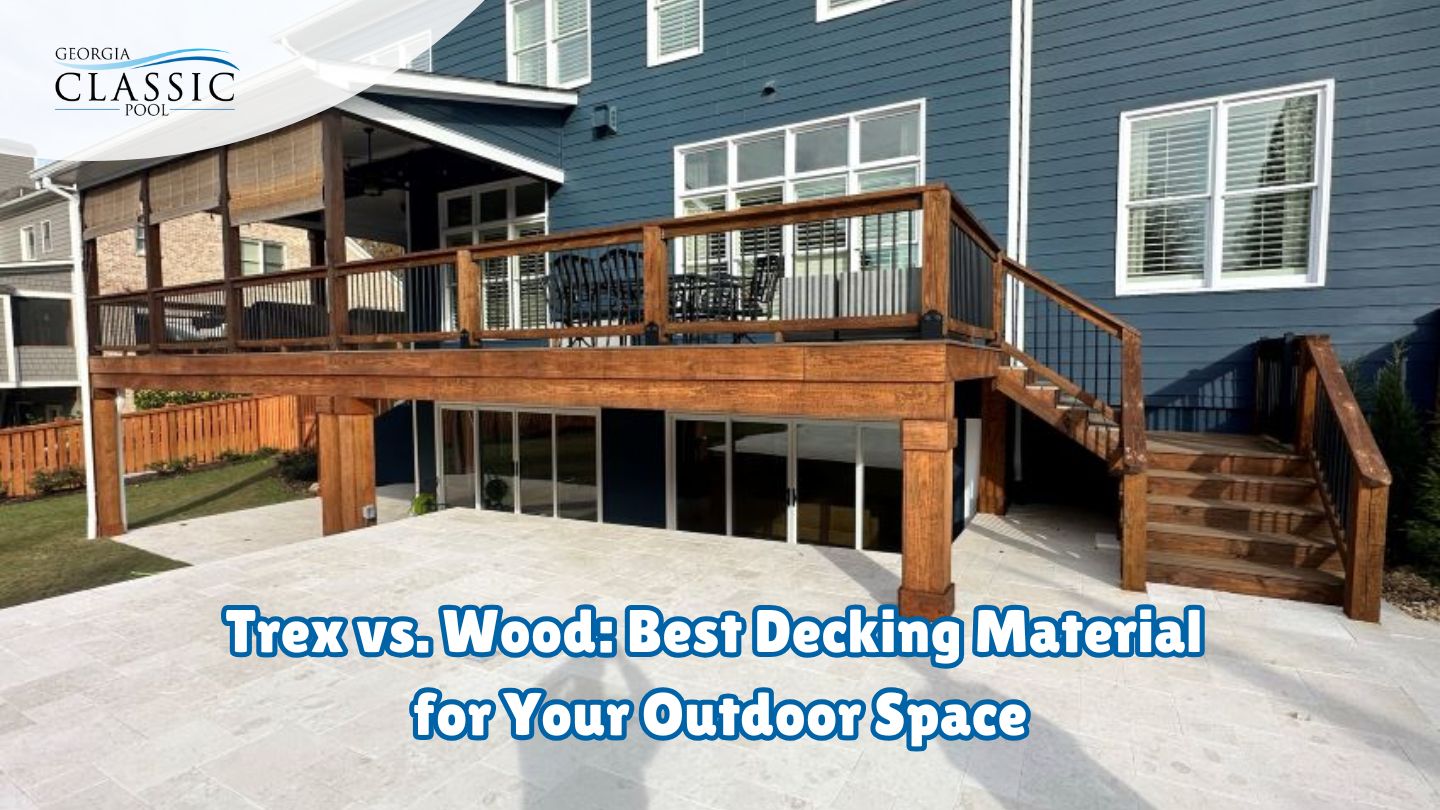Deciding between the two is difficult. Trex vs wood for your deck? We compare their durability, maintenance, cost, and environmental impact to help you choose the best option for your outdoor space.
Key Takeaways
- Trex composite decking offers superior durability, requires minimal maintenance, and is made from 95% recycled materials, making it an eco-friendly choice for long-term use.
- Traditional wood decking, while aesthetically appealing, demands extensive maintenance and has a shorter lifespan of 10 to 20 years compared to Trex’s 25 to 30 years.
- Choosing between Trex and wood decking involves weighing factors like upfront costs, maintenance needs, and personal aesthetic preferences, with Trex often offering better long-term value.
Overview
Choosing the ideal decking material is crucial for enhancing your outdoor space, with composite and wood being the primary options. Each offers distinct advantages and disadvantages. Composite deck boards, for instance, provide benefits such as minimal maintenance requirements and enhanced durability compared to natural wood decking. Wood has long been a traditional favorite. Since its introduction in the late 20th century, composite decking has evolved significantly, offering designs that closely mimic the appearance of genuine wood.
Understanding the unique strengths and weaknesses of each option is essential. Engineered deck materials like Trex are designed to resist moisture, splintering, and insect damage, making them durable choices that require minimal maintenance.
On the other hand, traditional wooden decks made from pressure-treated lumber pose environmental concerns due to potentially harmful chemical treatments and issues related to illegal logging practices. This guide is designed to help you evaluate these factors, enabling you to make an informed decision on the best decking material for creating your ideal outdoor retreat.
Trex Composite Decking Overview
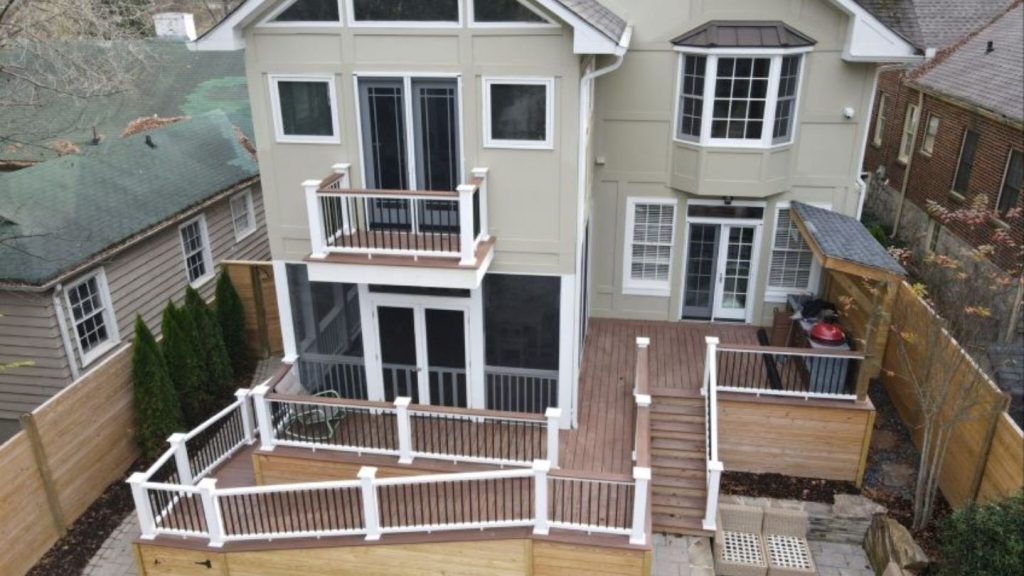
Composite decking, like Trex, has come a long way since its debut. It offers the look of wood without the usual issues, resisting moisture, insects, and splinters.
Trex composite decking avoids the environmental concerns of pressure-treated lumber, which often contains harmful chemicals. Its durability and low maintenance make it a smart choice for homeowners.
Composition of Trex Decking
Trex decking is made from 95% recycled materials, including reclaimed sawdust and plastic film, reducing its ecological impact. It mimics natural wood’s look in various colors and textures.
Durability and Resistance
Trex composite decking is incredibly durable, lasting 25 to 30 years with little upkeep. It resists discoloration, stains, moisture, and insects, maintaining traction in wet conditions for added safety.
Maintenance Requirements
Trex composite decking requires very little maintenance—just occasional cleaning with soap and water. Wood plastic composite (WPC), made from natural fibers and plastic, also offers low maintenance and recyclability, making it an attractive option for homeowners. This saves homeowners significant time and money compared to wood decks, which need regular staining and sealing.
Wood Decking Overview
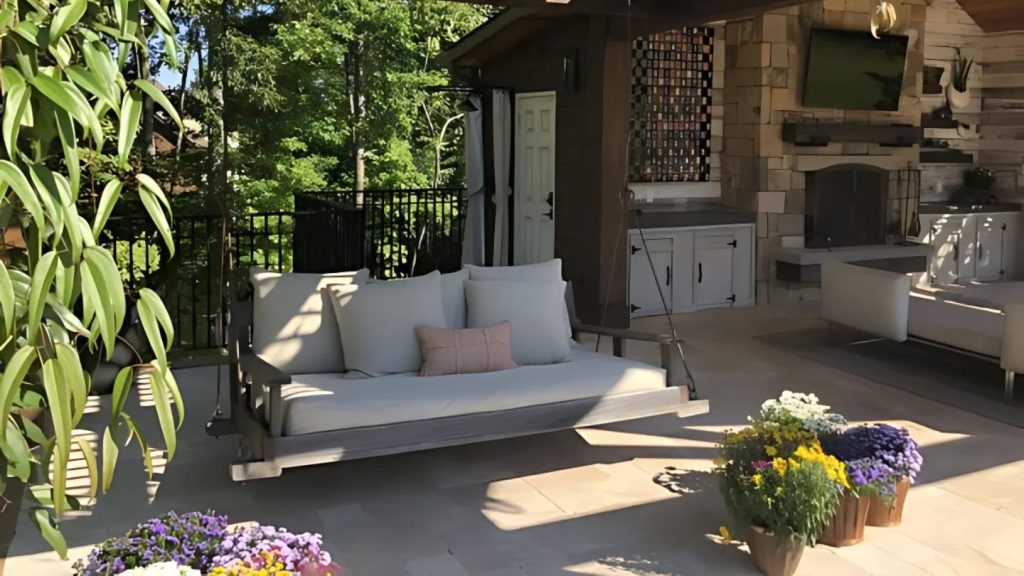
Wood decking is celebrated for its natural charm and versatility, making it a popular choice for many homeowners. Various wood types, such as cedar, redwood, exotic hardwoods, and pressure-treated pine, offer unique characteristics and aesthetic appeal.
Types of Wood Decking
Selecting the right type of wood decking is crucial for achieving the desired look and durability. Here are some popular options:
- Pressure-Treated Pine: Economical and treated to resist rot and insects.
- Cedar: Naturally resistant to moisture and insects, offering a warm, appealing look.
- Redwood: Similar to cedar, it has a rich color and natural resilience.
- Exotic Hardwoods: Known for their durability and distinct appearance, though often at a higher cost.
Each type of wood brings its own advantages and price points, allowing homeowners to choose based on their preferences and budget.
Durability and Longevity
Wood decking can last 10 to 20 years, depending on the type and maintenance. Regular care, like staining and sealing, is essential to protect against weather and pests. Despite this, wood can still be more prone to decay and insect damage than Trex composite decking.
Maintenance Needs
Maintaining a wood deck requires effort and cost, including cleaning, staining, and sealing. Homeowners may spend around $451 annually on upkeep. While this can be time-consuming, the authentic beauty of wood makes it a worthwhile endeavor for many.
Cost Comparison
When weighing the expenses of Trex composite decking against traditional wood decking, one must take into account not just the upfront cost but also long-term financial implications. Opting for wood decking can be more cost-effective initially because it usually comes with a lower starting price. For instance, installing pressure-treated wood typically ranges from $15 to $30 per square foot.
Choosing wood means you might incur hefty costs over time due to its demanding upkeep needs, which include yearly cleaning, staining, and sealing tasks.
On the other hand, opting for Trex composite decking requires a greater initial investment but promises considerable savings down the line thanks to its minimal maintenance requirements and extended durability. Homeowners who intend to remain in their properties for many years could see that investing in Trex ultimately proves more economically prudent as time passes.
Environmental Impact
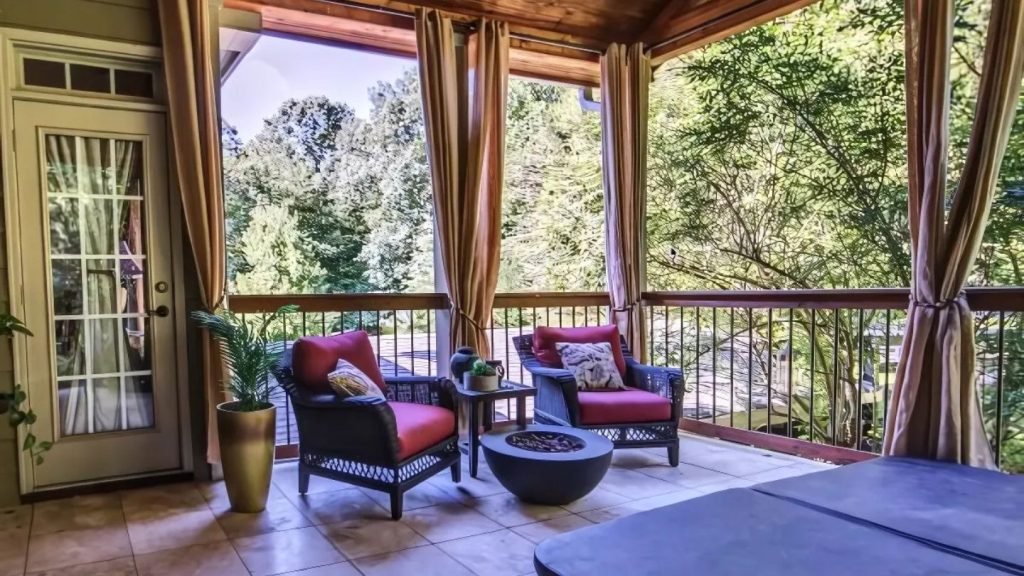
Understanding the environmental implications of your decking choice is a crucial factor. Both composite decks and wood decks present unique challenges and benefits in terms of sustainability.
Eco-Friendliness of Trex
Trex composite decking is renowned for its commitment to environmental sustainability, utilizing 95% recycled materials in its production. This includes reclaimed sawdust and plastic film, significantly reducing landfill waste. By incorporating these recycled components, Trex minimizes the need for new raw materials, promoting eco-friendly production practices.
- Installation involves using standardized board dimensions for ease and efficiency.
- The use of recycled materials ensures a reduced ecological footprint.
- Trex’s manufacturing process emphasizes sustainability, aiming to lessen environmental impact.
Choosing Trex decking not only offers a durable and low-maintenance solution but also aligns with eco-conscious values, making it a compelling choice for environmentally-minded homeowners.
Sustainability of Wood Decking
Wood decking, while offering natural beauty, presents certain ecological concerns. However, these can be mitigated through responsible sourcing and sustainable practices.
- Installation requires specialized tools and skills due to the variability in wood quality.
- Opt for wood from sustainably managed forests certified by organizations like the Forest Stewardship Council (FSC).
- Be mindful of the environmental impact of chemical treatments used in wood preservation.
By selecting sustainably sourced wood and adhering to eco-friendly practices, homeowners can enjoy the timeless appeal of wood decking while minimizing its environmental footprint. This approach ensures that your outdoor space remains both beautiful and environmentally responsible.
Aesthetic Appeal
Choosing the right decking material greatly influences the ambiance of your outdoor space. Both Trex composite decking and traditional wood decking offer distinct aesthetic qualities that cater to different preferences.
Appearance of Trex Decking
Trex decking is designed to mimic the natural beauty of wood while offering a low-maintenance solution.
- Wide range of colors and finishes
- Consistent surface with uniform grain patterns
- Resembles real wood without the upkeep
Trex decking seamlessly integrates into any outdoor setting, providing the visual appeal of wood with minimal maintenance demands.
Natural Beauty of Wood Decking
Wood decking is celebrated for its authentic charm and unique grain variations.
- Distinctive grain designs for a personalized look
- Natural warmth and inviting texture
- Timeless and classic appeal
While wood decking requires more maintenance, its genuine allure and tactile experience offer a traditional aesthetic that many homeowners cherish.
Installation Process Overview
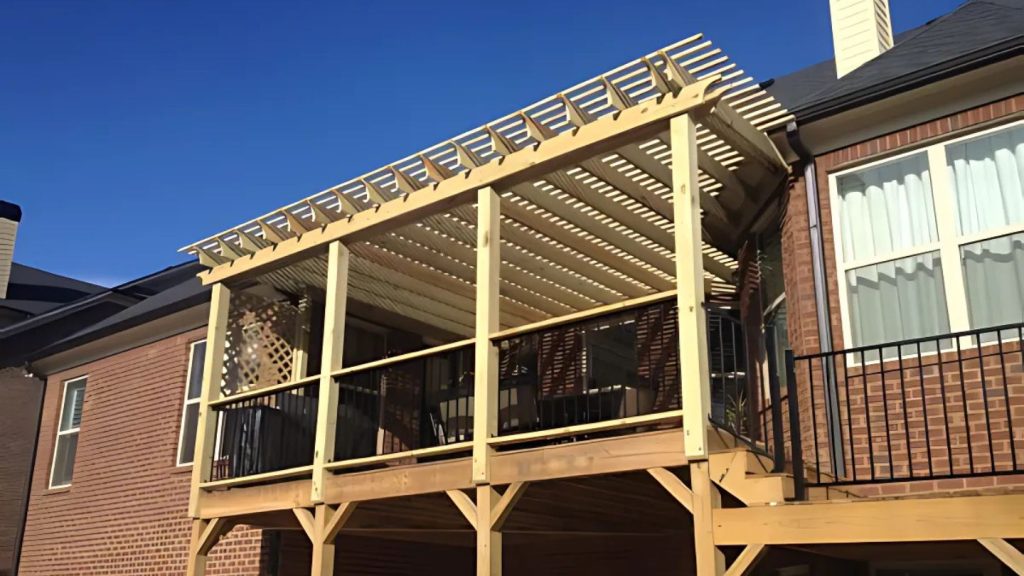
Choosing between Trex composite decking and traditional wood decking involves considering their distinct installation processes. Trex offers a streamlined setup due to its uniformity, while wood decking provides customization but requires more effort.
Installing Trex Decking
Installing composite decking, such as Trex, is straightforward and practical, making it a favorite for DIY enthusiasts and professionals alike.
- Standardized board dimensions simplify installation
- Reliable quality reduces time and labor
- Manufacturer guidelines ensure durability and functionality
Opting for Trex allows for efficient project completion with minimal hassle, which is ideal for those on tight schedules or seeking ease of installation.
Installing Wood Decking
Wood decking installation is more complex, offering a tailored finish but demanding specialized skills.
- Requires specialized tools and methods
- Variability in wood quality may present challenges
- Allows for complete customization to meet specific preferences
Though more time-consuming, wood decking results in a personalized outdoor space that aligns with your vision, rewarding those ready to invest effort in their project.
Advantages of Trex vs Wood Decking
Choosing between Trex and wood decking involves understanding the unique advantages each option offers. While Trex provides durability and eco-friendliness, wood decking is celebrated for its natural beauty and lower initial cost. Here’s a breakdown of the benefits each material brings to the table.
Advantages of Trex
Trex decking stands out for its exceptional durability and minimal maintenance needs, making it a popular choice for those seeking a long-lasting and eco-friendly decking solution.
- Exceptional durability and long lifespan
- Minimal maintenance requirements
- Eco-friendly, made from 95% recycled materials
- Reduced long-term maintenance costs
- Comes with a warranty of 25 to 50 years
In summary, Trex decking is an excellent choice for those seeking a sustainable, low-maintenance, and long-lasting decking solution. Its robust nature and environmental benefits make it a compelling option for modern homeowners.
Advantages of Wood
Wood decking offers a classic and authentic aesthetic appeal, providing a natural charm that is both timeless and versatile for customization.
- Natural texture and authentic aesthetic appeal
- Lower initial costs compared to composites
- High customization potential
- Timeless charm and warmth
Ultimately, wood decking remains a favored option for those who value its classic look and feel. While it requires more maintenance, the ability to personalize and its initial affordability make it an appealing choice for many homeowners.
Maintenance and Upkeep

Maintaining your decking material is essential to ensure its longevity and performance. Composite decking requires minimal maintenance, while wood decking demands more regular care.
To maintain your composite decking:
- Clean Regularly: Use a mild detergent and water to clean the deck.
- Avoid Harsh Chemicals: Do not use abrasive cleaners that can damage the surface.
- Apply Sealant or Stain: Protect the material from fading and staining with a suitable sealant or stain.
- Inspect Regularly: Look for signs of damage or wear and address them promptly.
To maintain your wood decking:
- Sand Regularly: Smooth out the surface to prevent splinters.
- Apply Stain or Sealant: Protect the wood from fading and staining.
- Inspect for Damage: Regularly check for signs of rot, decay, or insect damage.
- Repair or Replace: Address any damaged boards as needed to maintain the deck’s integrity.
It is important to properly maintain your decking in order to prolong its lifespan and keep it looking great. Whether you have composite or wood decking, these are some key steps you should take to ensure it stays in top condition.
Summary
In conclusion, both Trex composite decking and traditional wood decking offer unique benefits and challenges. Trex composite decking provides exceptional durability, minimal maintenance, and an eco-friendly option, making it an attractive choice for those seeking a hassle-free and sustainable solution for their outdoor spaces. On the other hand, wood decking offers a timeless aesthetic with customization possibilities and is generally more affordable initially—perfect for those who appreciate classic materials and design flexibility.
Georgia Classic Pool is not only a leader in custom pool creation but also excels in crafting exceptional outdoor living spaces. Our expertise in designing and constructing beautiful decks can help you make an informed decision, ensuring your outdoor area is both functional and visually appealing.
For those in search of expert advice or professional installation, Georgia Classic Pool stands out as one of the premier Atlanta pool builders. Whether you prefer the low-maintenance appeal of Trex or the natural beauty of wood decks, our team is ready to transform your vision into reality, providing an inviting platform for various activities outside your home. Contact us today to start designing your dream outdoor space.

